The Eighty Years War: Conflict Affecting the Evolution of Warfare
Military affairs at the turn of the eras. Everyone knows about the influence of war on the development of military affairs. They imagine that the warriors and military affairs of the beginning of the Hundred Years War and its end were very different. However, in Europe there was another war, which was also very long, and it also greatly influenced the development of military affairs. And it got the name of the Eighty Years War, although in our country, in traditional Soviet historiography, no one called it that, but called it the first bourgeois revolution in Europe. Meanwhile, this war, which lasted from 1568 to 1648, and yes, indeed, also known as the Netherlands Revolution, was essentially a war for the separation of seventeen provinces of the Netherlands from the Spanish Empire, although economic and religious issues were resolved along the way. However, to a much greater extent it was a war for national sovereignty. And 17 provinces in this war managed to defeat the Habsburg empire, using all the most modern achievements of military affairs at that time.
A feature of this war was that it was fought between two very rich countries, but rich in different ways. Spain received silver and gold from America and could buy everything. The slightest delay in the delivery of precious metals from the New World turned out to be a difficult test for Spain, since its soldiers in the same Netherlands refused to fight in this case. The Netherlands at that time had already embarked on the capitalist path of development, in the country the corvée had died out, commercial agriculture was developing in the countryside, like factories were being built after mushrooms in the rain. The whole of Europe was interested in Dutch goods. It was here that English landlords sold their wool, which just at that time began to pursue an active policy of fencing, and all because of the fact that due to the cooling in Europe, the demand for cloth grew very much, and at first they could only be made in the Netherlands.
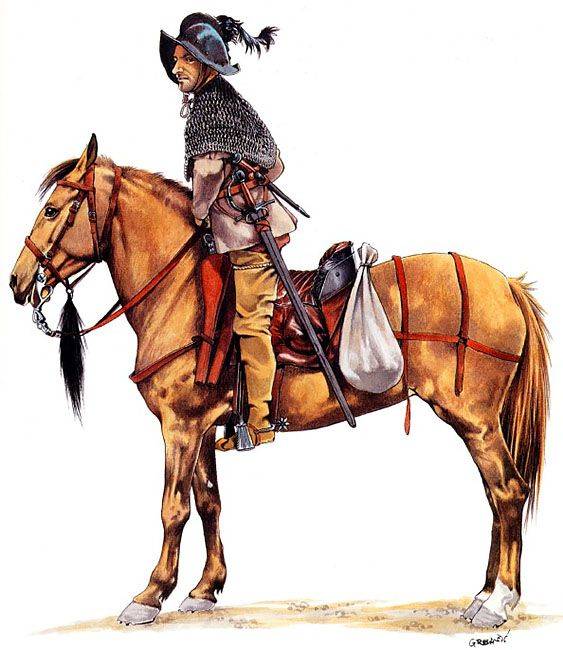
As a result, the war was fought to a large extent by the forces of mercenaries, whom both the Spaniards, the Dutch nobles, and the merchants hired wherever possible. Yes, of course, there were also Geuza ("tattered") sea and forest, that is, in fact, the same privateers and partisans. But they could not fight in the field against the Spanish infantry paid for in gold, so they were not the ones who won the war. It was in the battles of this war that, first of all, the types of cavalry and infantry became traditional for the New Age, and most importantly, having developed, they passed the battle test.
It should be noted that, like the Hundred Years War, its youngest “partner” did not go on constantly, but with interruptions and cease-fires. So, after the 41 year of the war in 1609, peace was concluded between Spain and the Netherlands. Some of the wealthy Dutch provinces freed themselves from Spanish rule and gained independence, and it was the small professional Dutch army under the command of Maurice Nassau who was able to gain important victories over the Spaniards. And, it is also important to emphasize, very serious changes in the Dutch War of Independence were carried out primarily in the cavalry. In 1597, out of the total number of horsemen in eleven regiments, eight regiments were converted into cuirassiers armed with pistols, and three into equestrian arquebusiers. In the same year, at the Battle of Turnhout, the Dutch cavalry virtually independently defeated the Spanish cuirassiers, armed with spears, and infantry with long lances. Imitating their Dutch colleagues, the imperial cuirassiers also abandoned the heavy spear and began to use a pair of pistols.
And then at the beginning of the XVII century, imperial masters began to produce the appropriate armor, discarding all unnecessary parts, but strengthening the breastplates of cuirasses and helmets. As a result, cavalry armor became heavier and more massive. The heaviest armor available today is exhibited at the museum in Graz: they weigh 42 kg. Their surface is not decorated, and their shape is not so sophisticated, but they protect well. Later, the cuirassiers played a very prominent role in the Thirty Years War, where they were commanded by Field Marshals Gottfried Pappenheim (1594-1632) and Albrecht Wallenstein (1583 - 1634).
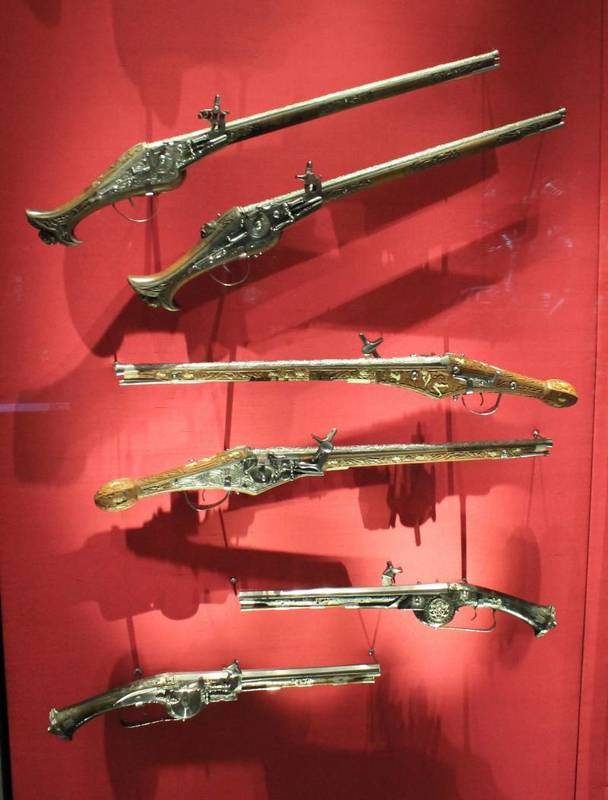
It is interesting that Pappenheim used cuirassier regiments of about 1000 people, consisting of ten companies of 100 people each, and at the same time narrowed the front of the attack. Wallenstein, by contrast, preferred a strike on a wide front, and his tactics were more successful.
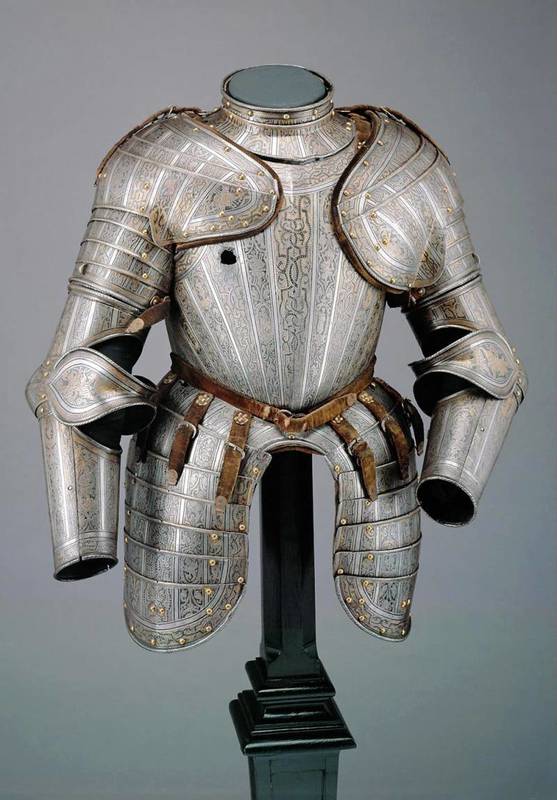
Here we already wrote about the number of formations of Reitars and cuirassiers and the differences in their tactics. Now it is time to emphasize that in the mercenary units of the Eighty Years' War, the armor used by the riders could range from a simple mail shirt or even a cloak to the already well-known “three-quarter armor”. Helmets also ranged from simple "iron hats" to burgons and "pot helmets" - called "sweat" in English. Later there appeared helmets “lobster tail”, which were distinguished by a lamellar collar that really looked like a crayfish tail, and a grill on the face made of fairly rare rods. The main weapon of both cuirassiers and reytarov was a pistol with a wheeled lock. The standard barrel length of such horseman pistols was about 50 cm, but there were longer samples with barrels in 75 cm. Weight could be both 1700 g and about 3 kg. The weight of the lead bullet was usually around 30 g, that is, it was the weight of the bullet of the infantry arquebus of the time. Moreover, even in the 1580 year, there were muskets firing bullets weighing 31 g, and very light arquebuses with bullets weighing 10 g. It is not surprising that such light bullets did not penetrate the cuirassier armor, which gave rise to the hope of protecting them from the fire of foot shooters.
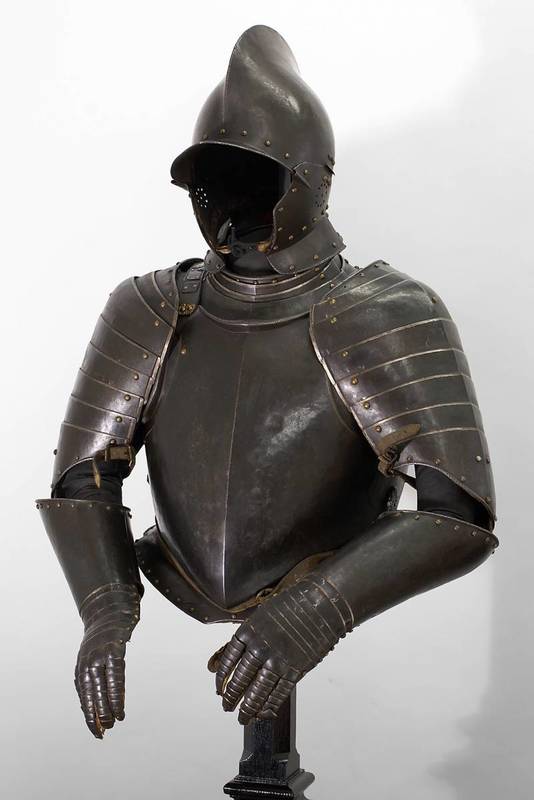
But already in 1590, Henry IV introduced more powerful muskets in his army, and now they began to pierce armor *. True, their weight was significant, and demanded the use of a stand - forket. From a horseman's pistol, one could quite accurately hit the target with approximately 20 steps; aimless, but dangerous for the enemy fire could be effective at a distance of 45 m. However, against the enemy, dressed in armor, a pistol shot was effective only a few steps away. Liliana and Fred Funkens report that the pistols were often loaded with steel darts and even Carro crossbow bolts. True, apart from them, no one seemed to write about this. It is clear that to shoot such a dart could only be practically point blank until it began to tumbling in flight, but in this way it was possible to break through any armor with guarantee! Reiters, who preferred fire fighting, had up to six pistols - two in holsters, behind the lapels of their boots and two more behind the belt.
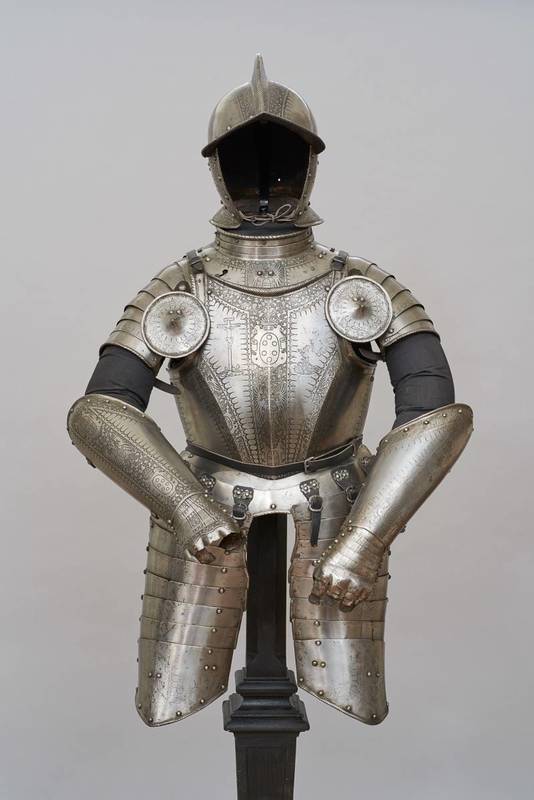
Three regiments were turned into equestrian arquebusiers. There are many options for where the name of this type of weapon came from: from Italian whether arcbibuso - descended from a distorted Dutch hakebusse, which in turn came from the German hakenbuchsen, but the translation of the latter is unambiguous - “a gun with a hook”. The first arquebuses weighed up to 30 kg; and fired from them from the fortress walls, catching a barbed hook on the battlements, which made it possible to compensate for the return. There is also an explanation that his butt was in the form of a hook, hence the name came from.
Lighter arquebuses of the early 16th century had wooden lodges and a stock made of walnut, birch or maple wood. The length was up to 1,5 m, caliber 12-20 mm. At first the trunks were made of bronze, later they began to make them of iron. The lock was simple: an S-shaped lever (serpentine - “coil”) was used to fasten the ignition cord made from hemp soaked in a solution of nitrate. By pressing the trigger lever, he descended onto the powder shelf and set fire to the charge of the ignition powder. The bullets were first stone, then lead, iron, and in rifled arquebuses - iron, covered with lead or wrapped in sheepskin. Even the most experienced shooters could, at best, do only 40 rounds per hour, but with the advent of wooden cartridges (usually there were 12 rounds, which is why they were called “12 apostles” in colloquial speech), the rate of fire increased.
The best German arquebus samples had a maximum firing range of about 400 steps. However, the effective range of the battle was much smaller, not to mention the range at which the bullet of the arquebus could penetrate the rider's armor. Nevertheless, it was still greater than the range of the pistol, which led to the appearance of horse arquebusers. Their weapons were of higher quality than ordinary infantrymen, and on horseback or dismounting, they could support the attacks of pistol riders with their fire.
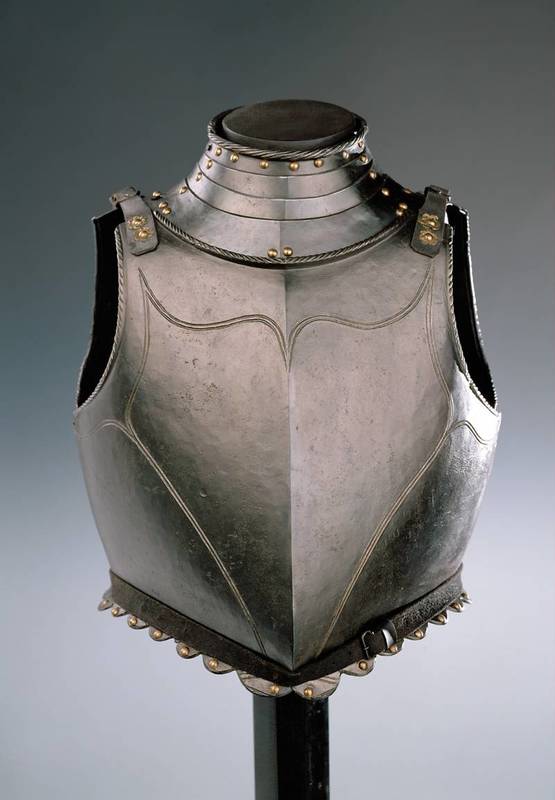
Arquebusier (the so-called such shooters in the French manner) did not wear heavy armor. Initially, they used helmets, cuirasses, and hand and hip protection. In the XVI and XVII centuries. the arquebusier dropped these armor one by one, until only their helmet remained. For personal protection, like the rest of the heavy cavalry, they wore a long heavy sword on their thighs. However, the arquebusiers of the mercenary units were real arsenals on horseback: in addition to the arquebus, they had up to six pistols in holsters and nests of the chest belt. Their pistols were weaker and shorter than those of the cuirassiers, since their main weapon was a relatively long-range arquebus. But to "shoot back" from an unexpected attack of enemy horsemen, without resorting to the help of infantry, they were quite capable!
* In the 1600 year, an arquebus weighed an average of 5 kg and fired a bullet weighing 25. The musket weighed 8 kg, and the bullet to it was 50
- Vyacheslav Shpakovsky
- Horses and saddles of the XVI-XVII centuries
“By people and by horses, not by aer”
Ordonance companies
“It's a miracle if someone is killed with a spear”
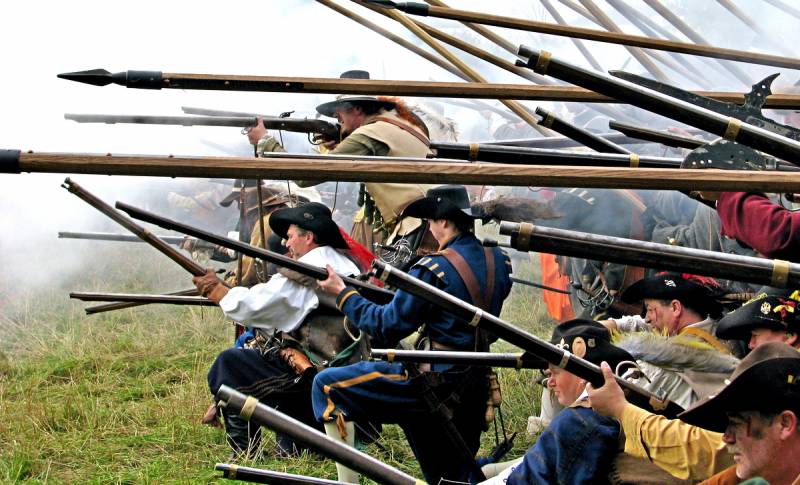
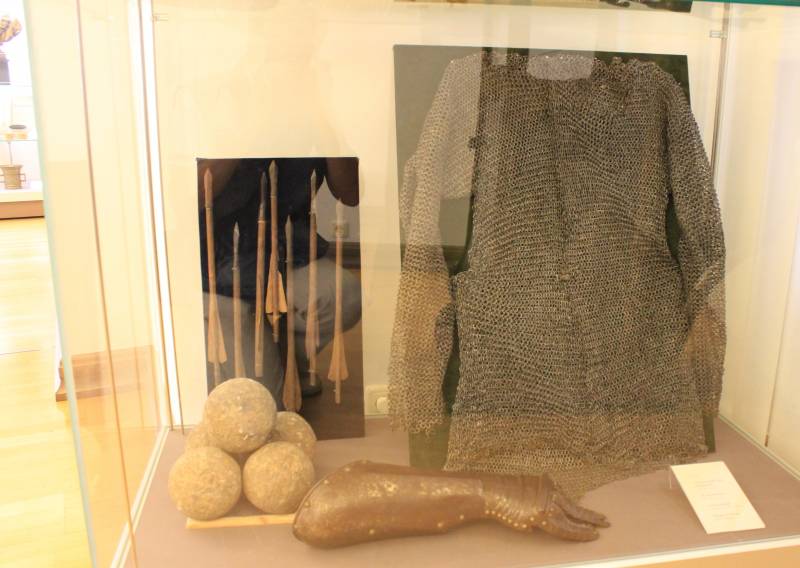
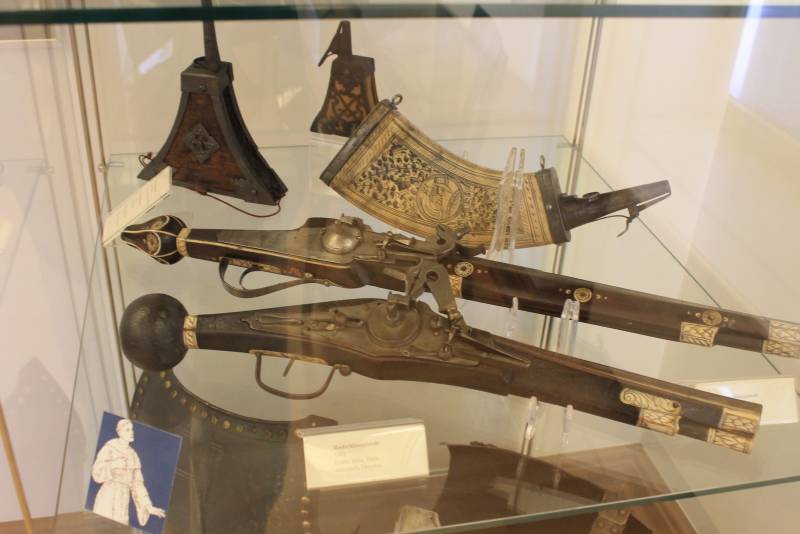
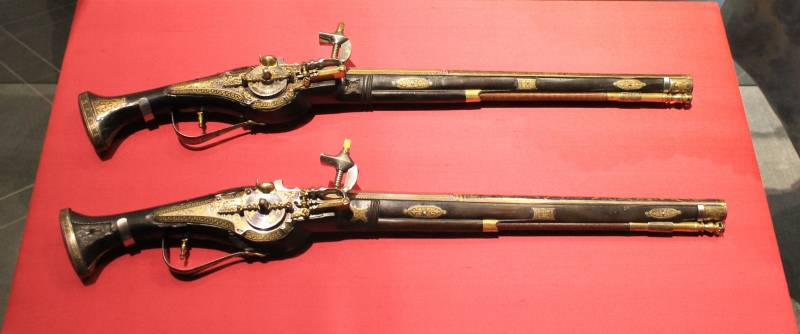
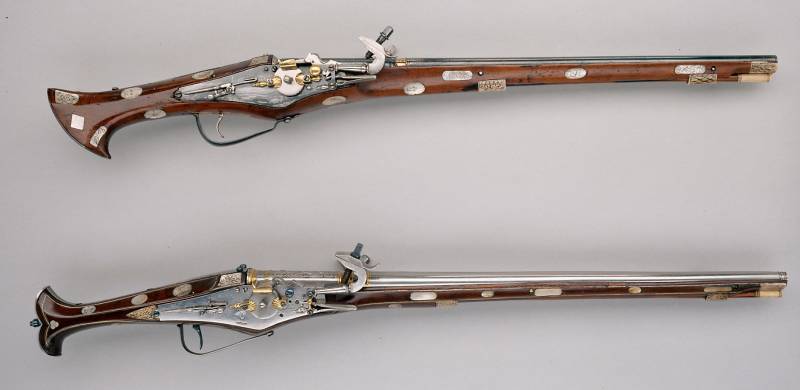
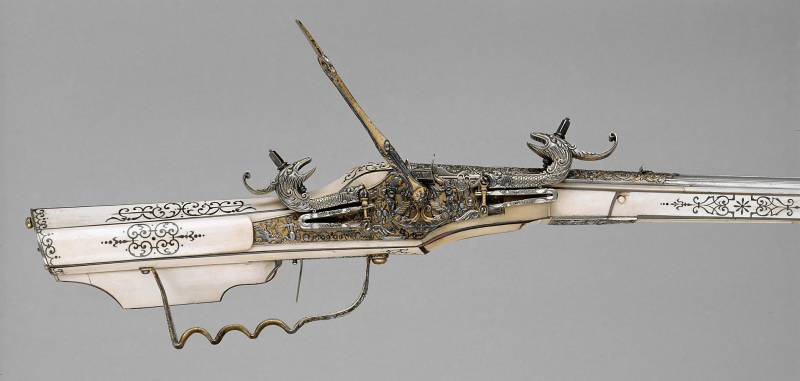
Information